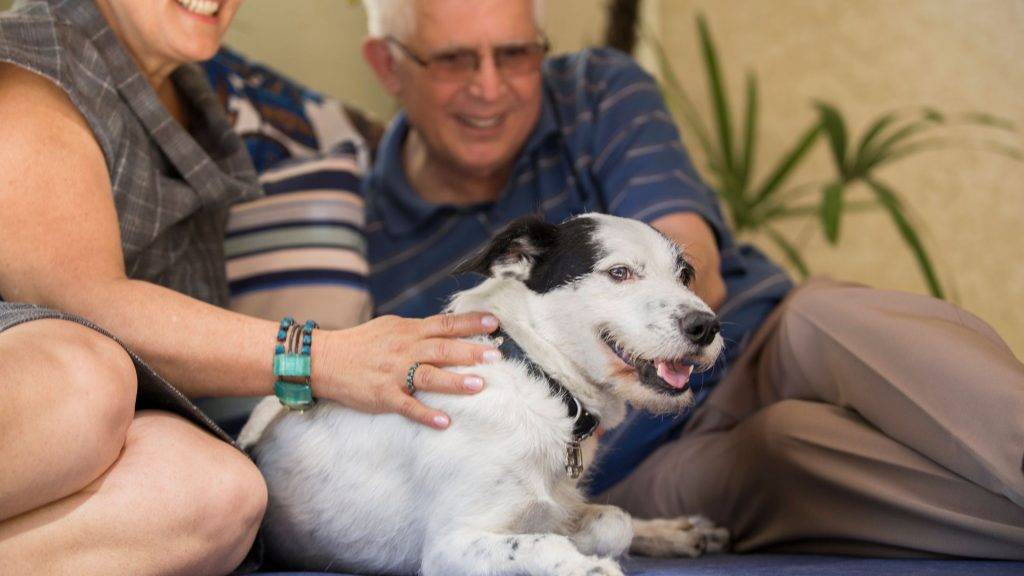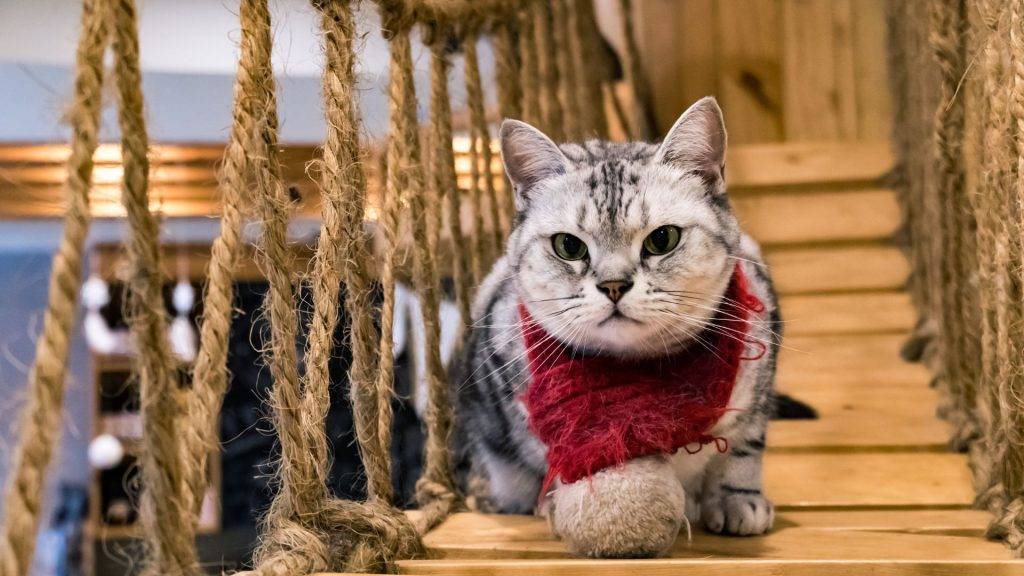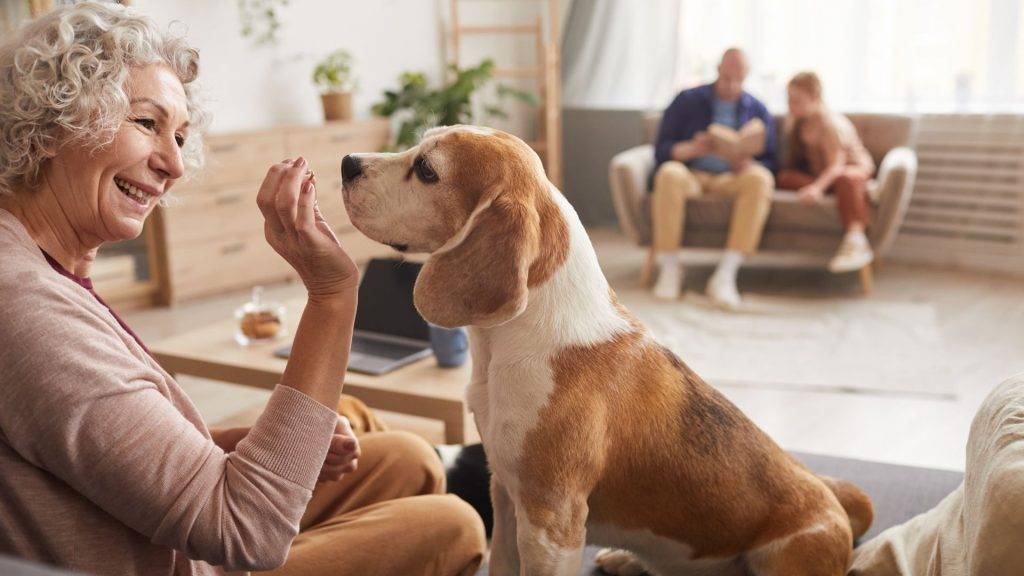Pets can provide companionship, reduce stress, and even improve physical health. However, as we age, we may find that your home is not as pet-friendly as it once was. From slippery floors to hard-to-reach areas, our home could pose a risk to both us and our pets.
Luckily, there are many pet-friendly home design ideas that can help you and your pet live safely and comfortably. Whether you’re renovating your home or looking to move to a new one, there are many options to consider. From easy-to-clean flooring to built-in feeding stations, these design ideas can make a big difference in your daily life. Additionally, these changes can help you age in place, allowing you to stay in your home for longer.
When considering pet-friendly home design for seniors, it’s important to keep both your needs and your pet’s needs in mind. By creating a home that is safe and comfortable for both you and your pet, you can enjoy many happy years together. In this article,
we’ll explore some of the most popular pet-friendly home design ideas for seniors, from flooring to furniture.
Understanding the Needs of Seniors

When it comes to designing a pet-friendly home for seniors, it’s important to understand their unique needs. As seniors age, they may experience physical limitations, sensory changes, and cognitive changes that can impact their ability to care for a pet and interact with their environment.
Physical Limitations
Seniors may experience physical limitations such as decreased mobility, arthritis, or other chronic conditions that can make it difficult to care for a pet. For example, they may have trouble bending down to pick up a pet or carrying a heavy bag of pet food. To accommodate these physical limitations, consider the following:
- Place pet food and water bowls at a height that is easy to reach
- Use lightweight pet food containers
- Choose a pet that requires minimal physical care, such as a cat or a small dog
Sensory Changes
Seniors may experience changes in their senses, such as hearing loss or decreased vision, which can impact their ability to care for a pet. For example, they may not hear their pet’s cries for help or may have trouble seeing their pet’s food and water bowls. To accommodate these sensory changes, consider the following:
- Use brightly colored pet food and water bowls that are easy to see
- Choose a pet that is quiet and doesn’t require a lot of vocal communication
- Use a vibrating collar or other sensory aids to help seniors hear their pet’s cries for help
Cognitive Changes
Seniors may experience cognitive changes, such as memory loss or confusion, which can impact their ability to care for a pet. For example, they may forget to feed their pet or may not remember where they put their pet’s food and water bowls. To accommodate these cognitive changes, consider the following:
- Use labeled containers for pet food and treats
- Use a digital feeding schedule to remind seniors when it’s time to feed their pet
- Choose a pet that is easy to care for and doesn’t require a lot of attention or training
By understanding the unique needs of seniors, you can design a pet-friendly home that is safe, comfortable, and easy to navigate.
Importance of Pets for Seniors

Pets can provide a great deal of physical and emotional benefits for seniors. As you age, it can become increasingly difficult to stay active and engaged with the world around you. Pets can help you maintain a sense of purpose and routine, as well as provide a source of companionship and love.
Loneliness and social isolation are common issues for seniors, with 25% of people aged 65 and older reporting feeling lonely and socially isolated, according to the Centers for Disease Control. Pets such as dogs and cats can provide a great deal of physical affection and companionship to keep lonely feelings at bay. They can also help you meet new people and make connections with other pet owners in your community.
Owning a pet can also have physical health benefits for seniors. Thanks to frequent walks and playtime, dog owners have lower blood pressure and cholesterol levels, along with a significantly decreased risk for cardiovascular disease. Additionally, pets can help reduce stress and anxiety levels, which can have a positive impact on overall health and wellbeing.
Overall, pets can be a wonderful addition to the lives of seniors, providing companionship, love, and physical and emotional benefits. If you are considering adopting a pet, it is important to choose a pet that is suitable for your lifestyle and needs. Consider factors such as size, energy level, and grooming requirements to find the perfect furry friend for you.
Designing a Pet-Friendly Home

Designing a pet-friendly home can be a challenge, especially for seniors who may have specific mobility and safety needs. However, with a few considerations, you can create a comfortable and safe home for both you and your furry friend.
Flooring Choices
When it comes to flooring, you want something that is durable, easy to clean, and slip-resistant. Hardwood floors can be easily scratched by pets, so you may want to consider alternatives such as vinyl, tile, or laminate. These materials are also waterproof, which makes them ideal for pets who may have accidents.
If you prefer carpet, choose a low-pile option that is easy to clean and stain-resistant. You may also want to consider carpet tiles, which can be easily replaced if they become damaged.
Furniture Selection
When selecting furniture, choose pieces that are easy to clean and won’t show pet hair or scratches. Leather or vinyl upholstery is a good option, as it is easy to wipe clean and doesn’t trap pet hair. You may also want to consider furniture with removable and washable covers.
If your pet likes to climb on furniture, consider investing in a scratching post or pad to redirect their behavior. This can help protect your furniture and keep your pet happy and healthy.
Home Layout
When designing the layout of your home, consider your pet’s needs. For example, if you have a dog, you may want to create a designated area for them to eat, sleep, and play. This can be a cozy corner in the living room or a separate room altogether.
You may also want to consider adding pet-friendly features such as a built-in feeding station or a pet door. These features can make life easier for both you and your pet.
In conclusion, designing a pet-friendly home for seniors requires careful consideration of flooring choices, furniture selection, and home layout. By keeping your pet’s needs in mind, you can create a comfortable and safe home that you both will enjoy.
Safety Measures

When designing a pet-friendly home for seniors, safety should be a top priority. Here are some safety measures to consider.
Pet Zones
Create designated pet zones in your home to keep your furry friend safe and contained. This can include a pet bed, food and water bowls, and toys. Consider using baby gates to block off certain areas of your home, such as stairs or rooms with fragile items. This will help prevent your pet from getting into anything that could harm them or damage your home.
Avoiding Tripping Hazards
Pets can be a tripping hazard, especially for seniors. To avoid accidents, keep pet toys, food, and water bowls out of high traffic areas. Consider using non-slip mats under pet bowls to prevent spills. Keep your home tidy and clutter-free to minimize tripping hazards. If you have a larger pet, consider training them to stay out of the way when you are walking around.
Outdoor Safety
When designing your outdoor space, make sure it is safe for your pet. Install a fence to keep your pet contained and prevent them from running into the street. Consider using non-toxic plants in your garden to prevent your pet from ingesting harmful substances. If you have a pool, make sure it is securely fenced off to prevent your pet from falling in. Use caution when walking your pet outside, especially if they are prone to pulling or running.
By implementing these safety measures, you can create a pet-friendly home that is both comfortable and safe for you and your furry friend.
Choosing the Right Pet for Seniors

Pets can bring joy, companionship, and a sense of purpose to seniors. However, choosing the right pet for your needs and lifestyle is crucial. Here are some factors to consider when selecting a pet:
Energy Level
Seniors may prefer pets with lower energy levels, as they may not have the stamina to keep up with a high-energy pet. Consider a cat or a small dog breed that requires less exercise. However, be aware that even low-energy pets still require daily care and attention.
Size
Smaller pets are often easier to care for and handle, making them a good choice for seniors. Consider a small dog breed or a cat. However, keep in mind that some small dogs can be high-energy and require more exercise than others.
Grooming Needs
Some pets require more grooming than others. Seniors may prefer pets that require less maintenance, such as short-haired cats or dogs that don’t shed much. Consider your ability to groom your pet or the cost of hiring a professional groomer.
Personality
Consider your personality and lifestyle when choosing a pet. If you are looking for a companion to cuddle with, a lap dog or a cat may be a good choice. If you are looking for a pet to take on walks, consider a small dog breed. If you have allergies, consider a hypoallergenic pet.
Overall Health
It’s important to choose a pet that is healthy and well-suited for your lifestyle. Consider the pet’s age, any medical conditions, and the cost of veterinary care. Adopting a senior pet may be a good choice for seniors who want a companion that requires less training and exercise.
Remember, owning a pet is a big responsibility. Make sure you are ready and able to provide your pet with the love, care, and attention it needs.
Maintaining a Clean Home with Pets

As a senior pet owner, it’s important to keep your home clean and tidy. Here are some tips to help you maintain a clean home with pets.
Pet Grooming
Regular grooming of your pets is essential to keep your home clean. Brushing your pet’s coat frequently will help to reduce shedding. This will also help to prevent hair from getting stuck on your furniture and carpets. Additionally, bathing your pet regularly will help to reduce odors and keep them clean.
You can also consider trimming your pet’s nails regularly. This will help to prevent scratches on your furniture and floors. If you’re not comfortable doing this yourself, you can take your pet to a groomer or a veterinarian to have it done.
Cleaning Tips
Here are some cleaning tips to help you keep your home clean with pets:
- Vacuum your floors and carpets regularly to pick up pet hair and dander.
- Use a lint roller or a pet hair remover to remove pet hair from your furniture and clothing.
- Use a pet-safe cleaner to clean up any accidents your pet may have had in the house.
- Add baking soda to your litter box to help absorb odors.
- Use slipcovers on your furniture to protect them from pet hair and scratches.
- Use washable throw rugs in high traffic areas to protect your floors from scratches and accidents.
By following these tips, you can maintain a clean and pet-friendly home.
Conclusion

Designing a pet-friendly home for seniors is not only about creating a comfortable living space for them but also about making their furry companions feel at home. By incorporating pet-friendly features into the design, you can improve the quality of life for both seniors and their pets.
In conclusion, designing a pet-friendly home for seniors requires careful consideration of both the needs of seniors and their pets.
By incorporating pet-friendly features into your home design, you can create a comfortable and safe living space for both seniors and their furry companions.

